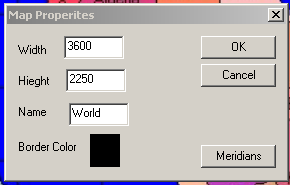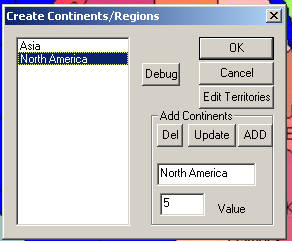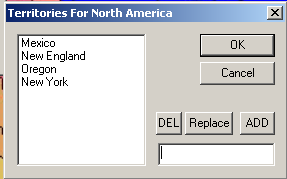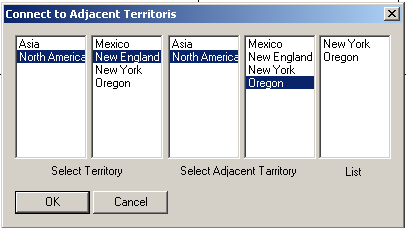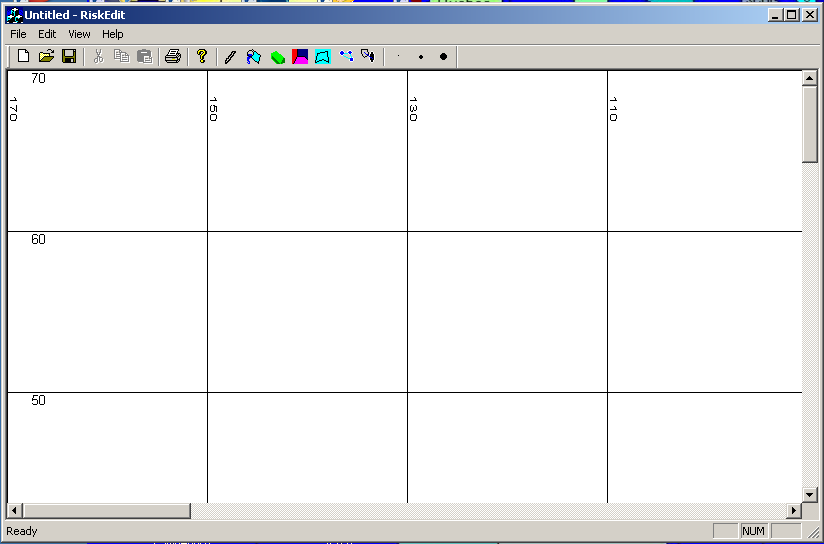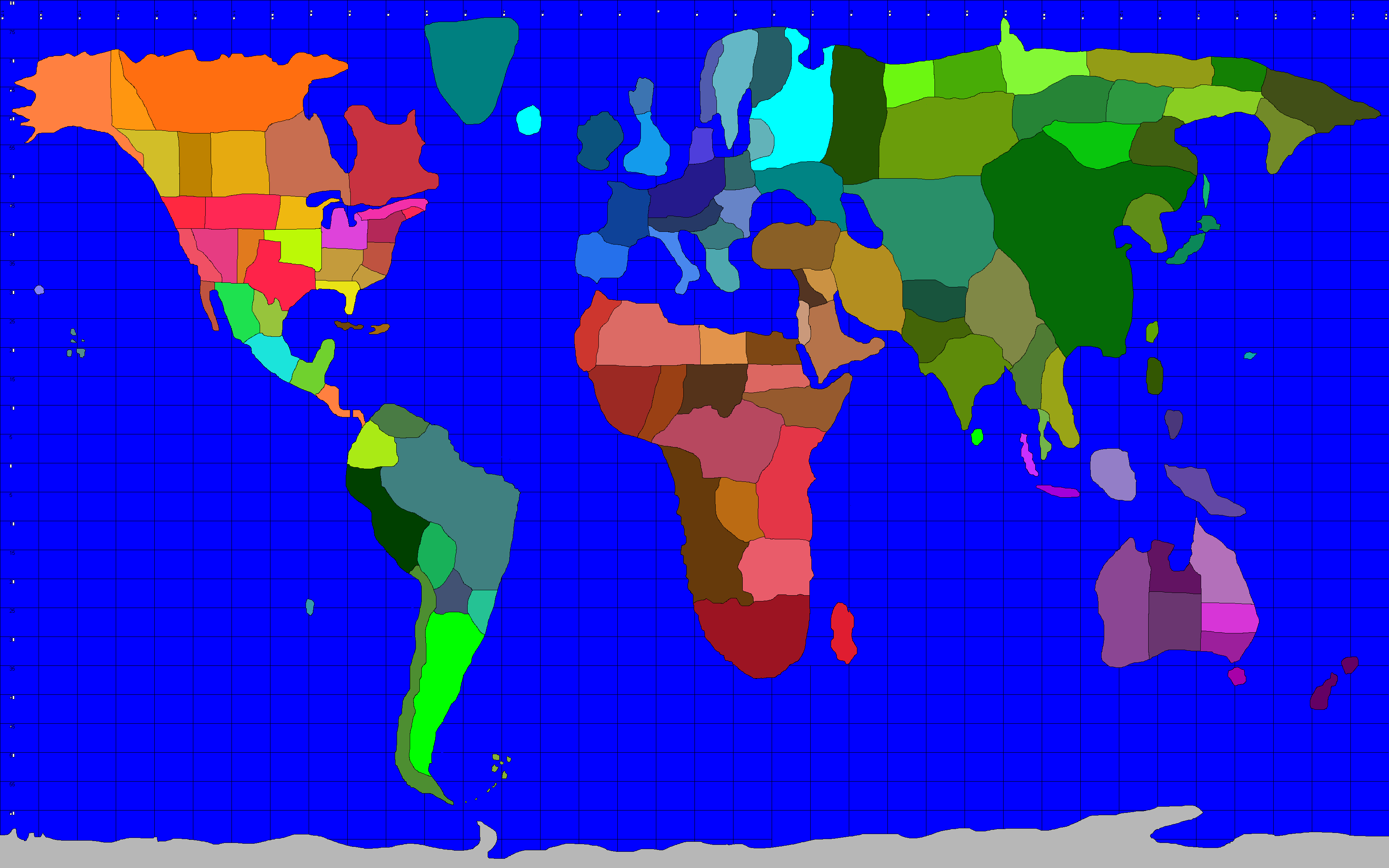
| void CAiThread::Choose(void *payload,int sz) { char *pTemp = (char *)payload; AMSG *pMSG = CreateAMSG(sz,(char *)&pTemp,AIMSG_CHOOSE); pMSG->hWind = m_hWnd; pMSG->ReplyCmd = WM_MSGFROMAI; this->m_MSGQ->Insert(pMSG); } |
| void CAiThread::Choose(int Aux, void *payload,int sz) { Message(AIMSG_CHOOSE,Aux,payload,sz); } void CAiThread::Message(int cmd,int Aux,void *payload,int sz) { AMSG *pMSG = CreateAMSG(sz,(char *)payload,cmd); pMSG->hWind = m_hWnd; pMSG->Aux = Aux; pMSG->ReplyCmd = WM_MSGFROMAI; this->m_MSGQ->Insert(pMSG); } |
| #if !defined(AFX_AUTOSCROLLVIEW_H__769B5A42_3E24_47C7_956C_1121962185B1__INCLUDED_) #define AFX_AUTOSCROLLVIEW_H__769B5A42_3E24_47C7_956C_1121962185B1__INCLUDED_ #if _MSC_VER > 1000 #pragma once #endif // _MSC_VER > 1000 // AutoScrollView.h : header file // ///////////////////////////////////////////////////////////////////////////// // CAutoScrollView view class CAutoScrollView : public CScrollView { protected: CAutoScrollView(); // protected constructor used by dynamic creation DECLARE_DYNCREATE(CAutoScrollView) // Attributes public: BOOL m_bAutoScroll; BOOL m_bIsScrolling; // Operations public: BOOL IsAutoScrolling(){return m_bIsScrolling;} void EnableAutoScrolling (BOOL bMode){m_bAutoScroll = bMode;} protected: virtual void OnAutoScroll(CPoint point, BOOL bBeforeScroll); // Overrides // ClassWizard generated virtual function overrides //{{AFX_VIRTUAL(CAutoScrollView) protected: virtual void OnDraw(CDC* pDC); // overridden to draw this view virtual void OnInitialUpdate(); // first time after construct //}}AFX_VIRTUAL // Implementation protected: void AutoScroll(UINT nRefMessage); virtual ~CAutoScrollView(); #ifdef _DEBUG virtual void AssertValid() const; virtual void Dump(CDumpContext& dc) const; #endif // Generated message map functions //{{AFX_MSG(CAutoScrollView) // NOTE - the ClassWizard will add and remove member functions here. afx_msg void OnLButtonDown(UINT nFlags, CPoint point); //}}AFX_MSG DECLARE_MESSAGE_MAP() }; ///////////////////////////////////////////////////////////////////////////// //{{AFX_INSERT_LOCATION}} // Microsoft Visual C++ will insert additional declarations immediately before the previous line. #endif // !defined(AFX_AUTOSCROLLVIEW_H__769B5A42_3E24_47C7_956C_1121962185B1__INCLUDED_) |
| // AutoScrollView.cpp : implementation file // // // CAutoScrollView is derived from CScrollView. It adds the AutoScroll feature // that is needed in many applications. AutoScrolling means that the window // begins to scroll as soon as the mouse cursor leaves the client area of the // current View while the left mouse button is pressed. You can customize the // button used to autoscroll using the SetAutoButton inline member function. // SetAutoButton accepts one parameter of type _AutoButton: mbLeft, mbRight or // mbMiddle. SetAutoButton returns the button type that was active before the // call. // // The amount by which the View is scrolled depends on the distance between the // the window border and the mouse cursor. The greater the distance, the faster // the View scrolls. // // You can enable or disable the AutoScroll feature by using the // EnableAutoScrolling() inline member function. It accepts one parameter // of type BOOL. // // By default, autoscrolling is enabled with the left button. // // BOOL IsAutoScrolling() tells you whether autoscrolling operations are // underway. // // To give your application's View a chance to properly update the screen while // autoscrolling, CAutoScrollView calls its OnAutoScroll() virtual member // function just before and just after scrolling. Override this function in // your View if you want to take some action whenever autoscrolling occurs. // By default, OnAutoScroll does nothing. // // OnAutoScroll accepts two parameters: // // virtual void OnAutoScroll(CPoint point, BOOL bBeforeScroll); // // point indicates the current position of the mouse cursor in client device // coordinates. That is, the ScreenToClient() function has been applied to point // but no DPtoLP operation has been done. // // bBeforeScroll is TRUE when OnAutoScroll is called before scrolling and // FALSE otherwise. // // Most of the time you will not have any opportunity to initialize a // CAutoScrollView yourself. So, member variables are initialized in the // constructor directly. // // CAutoScrollView automatically adapts to the mapping mode. For example, if // you have set a metric mapping mode, the nMapFactor will be used to // reverse y coordinates. // // CAutoScrollView also corrects an annoying behavior of // CScrollView::ScrollToPosition. This member function doesn't check whether // the scroll limit has already been reached and always tries to scroll. This // wouldn't be a problem if a call to ScrollWindow was not made systematically. // This generates flicker. When AutoScrolling, this condition doesn't occur. // #include "stdafx.h" #include "riskedit.h" #include "AutoScrollView.h" #ifdef _DEBUG #define new DEBUG_NEW #undef THIS_FILE static char THIS_FILE[] = __FILE__; #endif ///////////////////////////////////////////////////////////////////////////// // CAutoScrollView IMPLEMENT_DYNCREATE(CAutoScrollView, CScrollView) CAutoScrollView::CAutoScrollView() { m_bAutoScroll = TRUE; m_bIsScrolling = FALSE; } CAutoScrollView::~CAutoScrollView() { } BEGIN_MESSAGE_MAP(CAutoScrollView, CScrollView) //{{AFX_MSG_MAP(CAutoScrollView) // NOTE - the ClassWizard will add and remove mapping macros here. //}}AFX_MSG_MAP END_MESSAGE_MAP() ///////////////////////////////////////////////////////////////////////////// // CAutoScrollView drawing void CAutoScrollView::OnInitialUpdate() { CScrollView::OnInitialUpdate(); CSize sizeTotal; // TODO: calculate the total size of this view sizeTotal.cx = sizeTotal.cy = 100; SetScrollSizes(MM_TEXT, sizeTotal); } void CAutoScrollView::OnDraw(CDC* pDC) { CDocument* pDoc = GetDocument(); // TODO: add draw code here } ///////////////////////////////////////////////////////////////////////////// // CAutoScrollView diagnostics #ifdef _DEBUG void CAutoScrollView::AssertValid() const { CScrollView::AssertValid(); } void CAutoScrollView::Dump(CDumpContext& dc) const { CScrollView::Dump(dc); } #endif //_DEBUG ///////////////////////////////////////////////////////////////////////////// // CAutoScrollView message handlers void CAutoScrollView::AutoScroll(UINT nRefMessage) { MSG msg; // dummmy message structure to process incoming // messages while autoscrolling. CPoint ptScrollPos, // Current scroll position - logical units ptDevScrollPos, // Current scroll position - device units ptCursorPos; // Current mouse cursor position CRect rc; // Client area long dx, dy; // Scrolling increment SIZE sizeTotal, // CScrollView scroll data sizePage, sizeLine; int nMapMode, // Mapping mode nMapFactor, // Accounts for mapping mode xMin, xMax, yMin, yMax; // Scroll range if (!m_bAutoScroll) return; msg.message = 0; // forces at least one loop. SetCapture(); GetDeviceScrollSizes(nMapMode, sizeTotal, sizePage, sizeLine); // We keep track of the scroll range because CScrollView::ScrollToPosition always // try to scroll even if the scroll limit has been reached. This results in screen // flickering when ScrollWindow is called. GetScrollRange(SB_HORZ, &xMin, &xMax); GetScrollRange(SB_VERT, &yMin, &yMax); // Process all messages until the relevant mouse button // has been released. nRefMessage depends on which button // has been used to trigger autoscrolling. // while (msg.message != nRefMessage) BOOL bSawRefMessage = FALSE; while (!bSawRefMessage) { // Process incoming messages until autoscroll button is released // You cannot peek here because it may process an invalidate // due to the scrolling. /* if (PeekMessage(&msg, 0, 0, 0, PM_REMOVE)) { TranslateMessage(&msg); DispatchMessage(&msg); } */ ptScrollPos = GetScrollPosition(); ptDevScrollPos = GetDeviceScrollPosition(); GetCursorPos(&ptCursorPos); ScreenToClient(&ptCursorPos); GetClientRect(&rc); dx = 0L; dy = 0L; if ((ptCursorPos.y < 0) && (ptDevScrollPos.y != yMin)) // Cursor is above client area dy = min(-sizeLine.cy, max(-sizePage.cy, (ptCursorPos.y/10) * sizeLine.cy)); else if ((ptCursorPos.y > rc.bottom) && (ptDevScrollPos.y != yMax)) // Cursor is below client area dy = max(sizeLine.cy, min(sizePage.cy, ((ptCursorPos.y - rc.bottom)/10) * sizeLine.cy)); // otherwise we can't scroll anyway if ((ptCursorPos.x < 0) && (ptDevScrollPos.x != xMin)) // Cursor is on the left of the client area dx = min(-sizeLine.cx, max(-sizePage.cx, (ptCursorPos.x/10) * sizeLine.cx)); else if ((ptCursorPos.x > rc.right) && (ptDevScrollPos.x != xMax)) // Cursor is on the right of the client area dx = max(sizeLine.cx, min(sizePage.cx, ((ptCursorPos.x - rc.right)/10) * sizeLine.cx)); // otherwise we can't scroll anyway // if mouse cursor is dragging outside the client area, scrolling occurs if ((dx != 0) || (dy != 0)) { // Flip the Y coordinate if we're not in MM_TEXT nMapFactor = (nMapMode == MM_TEXT) ? 1 : -1; ptScrollPos.y += (int) dy * nMapFactor; ptScrollPos.x += (int) dx; m_bIsScrolling = TRUE; OnAutoScroll(ptCursorPos, TRUE); ScrollToPosition(ptScrollPos); while (PeekMessage(&msg, 0, 0, 0, PM_REMOVE)) //message pump 2 { TranslateMessage(&msg); DispatchMessage(&msg); // if (msg.message == nRefMessage) break; if (msg.message == nRefMessage) bSawRefMessage = TRUE; } //end of message pump 2 // if (!bSawRefMessage) OnAutoScroll(ptCursorPos, FALSE); } else { while (PeekMessage(&msg, 0, 0, 0, PM_REMOVE)) //message pump #3 { TranslateMessage(&msg); DispatchMessage(&msg); // if (msg.message == nRefMessage) break; if (msg.message == nRefMessage) bSawRefMessage = TRUE; } //end of message pump #3 m_bIsScrolling = FALSE; } //end of if-else } //end of while loop ReleaseCapture(); m_bIsScrolling = FALSE; } void CAutoScrollView::OnLButtonDown(UINT nFlags, CPoint point) { CScrollView::OnLButtonDown(nFlags, point); AutoScroll(WM_LBUTTONUP); } void CAutoScrollView::OnAutoScroll(CPoint /*point*/, BOOL /*bBeforeScroll*/) { } |
